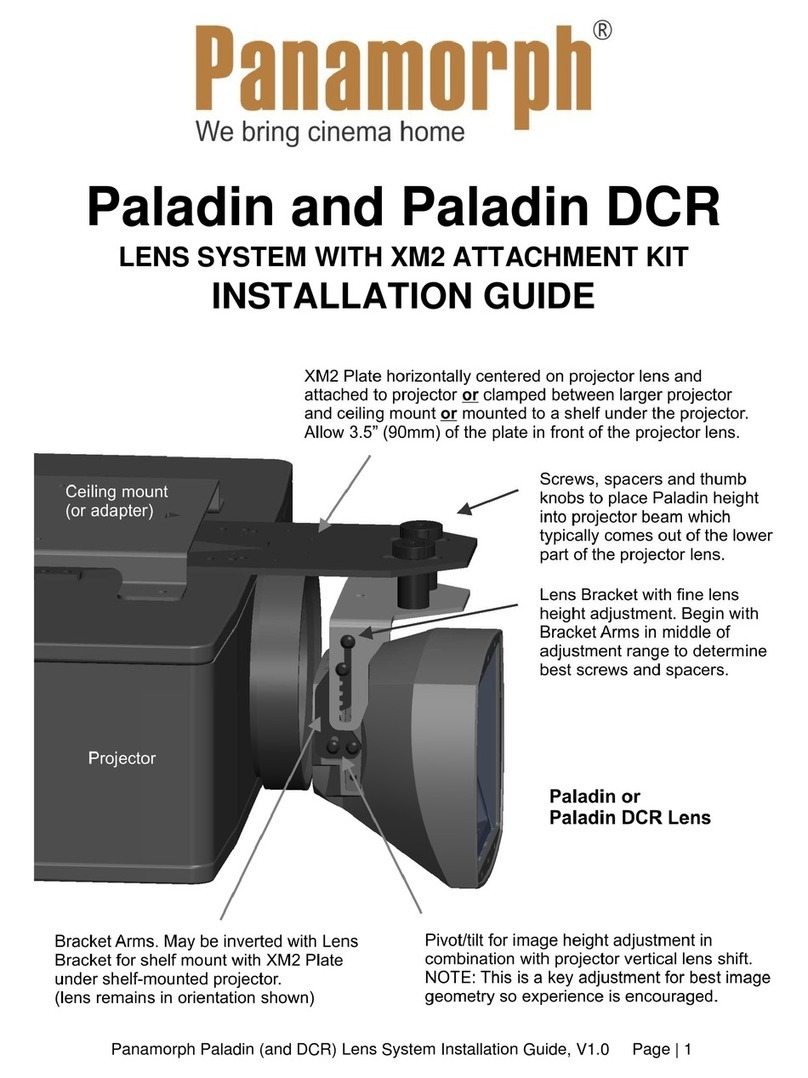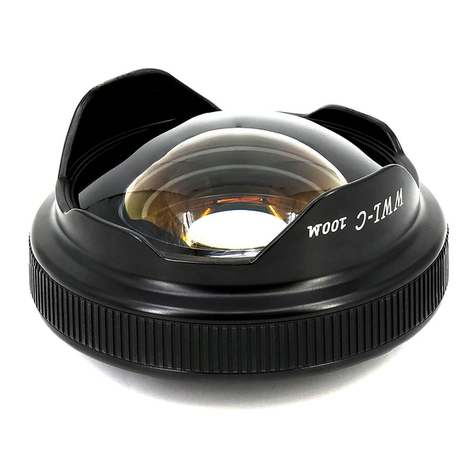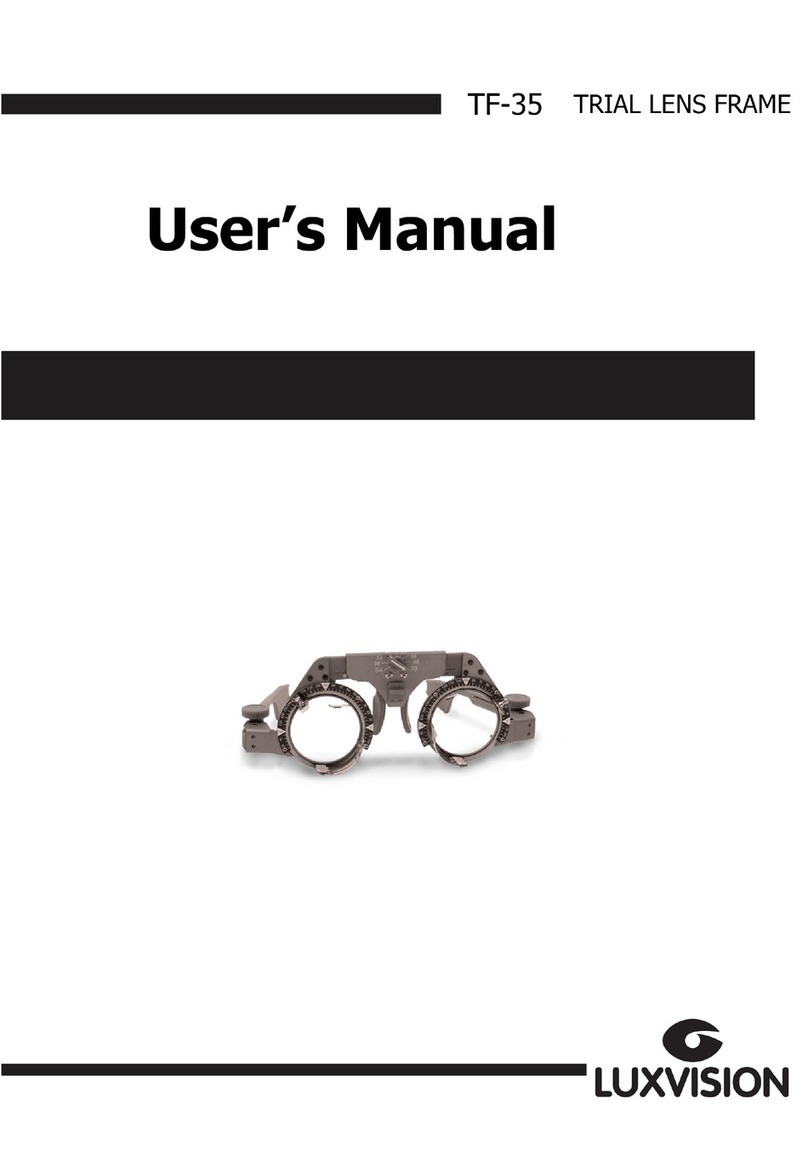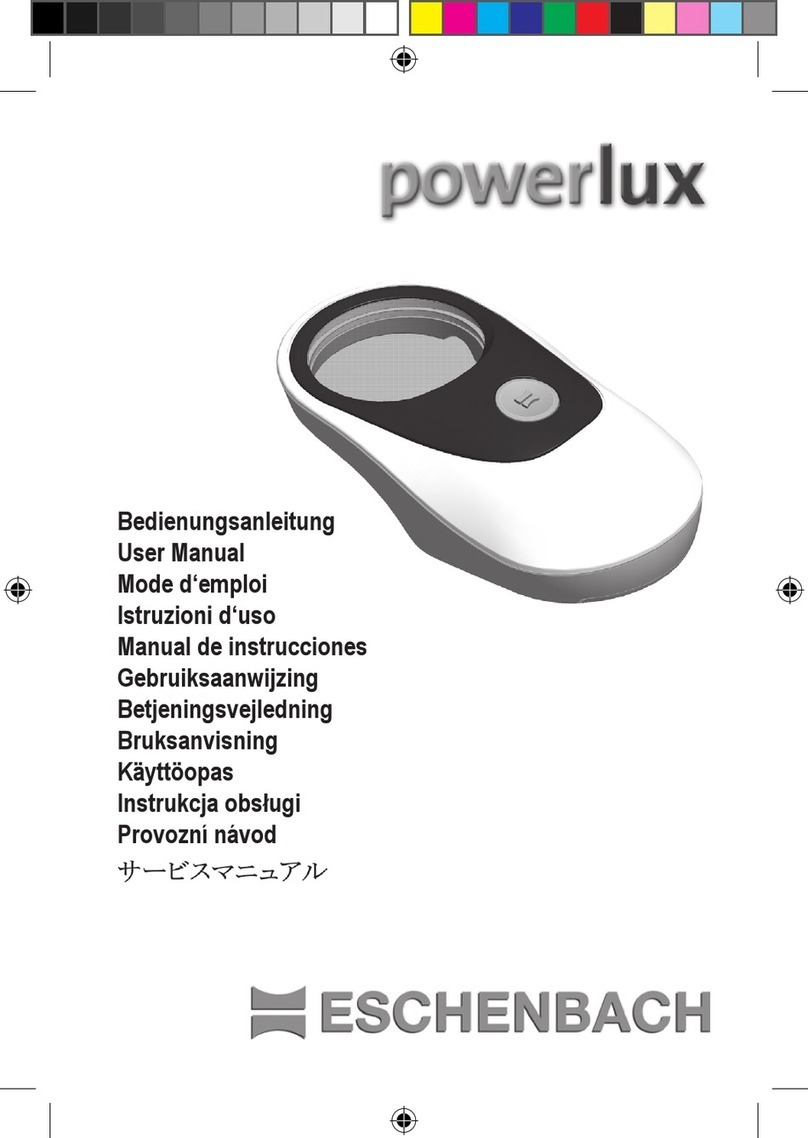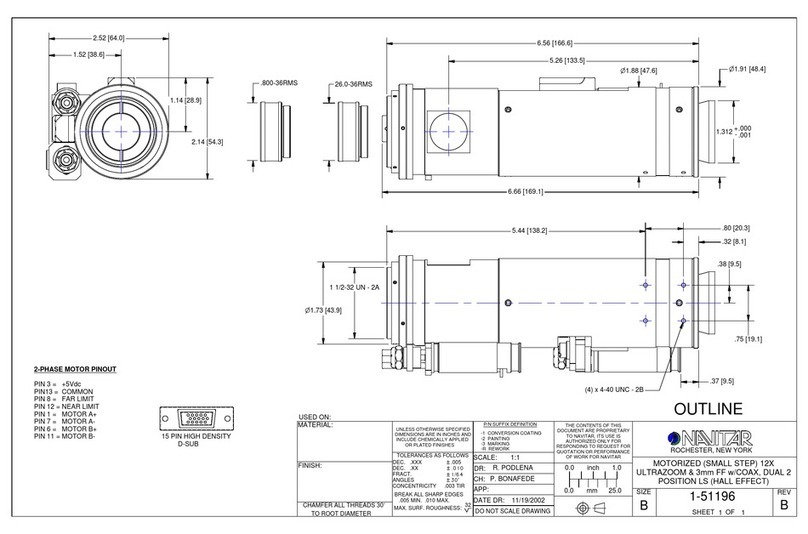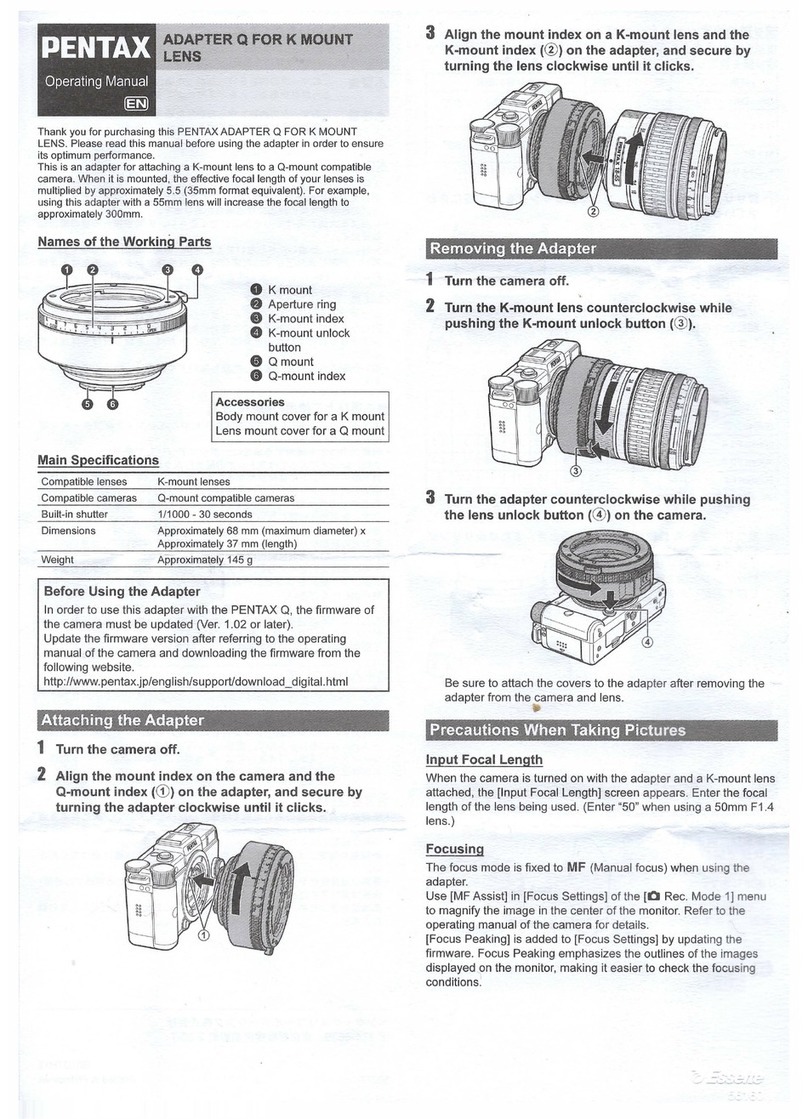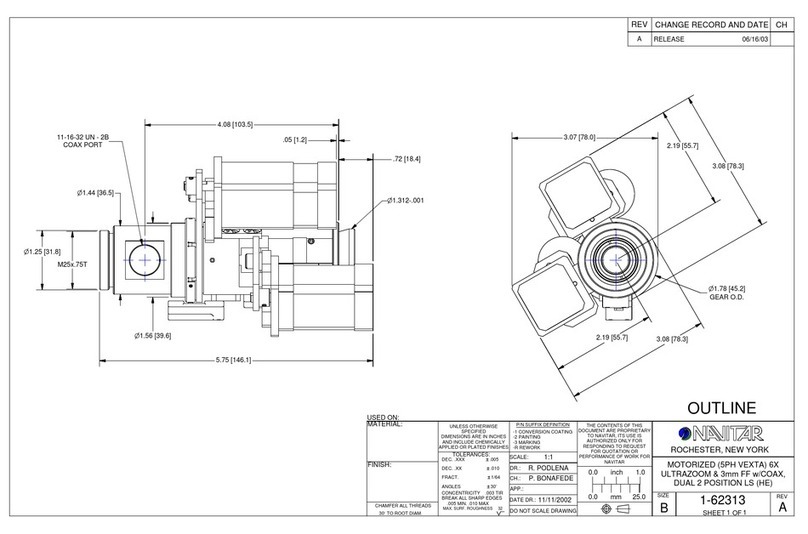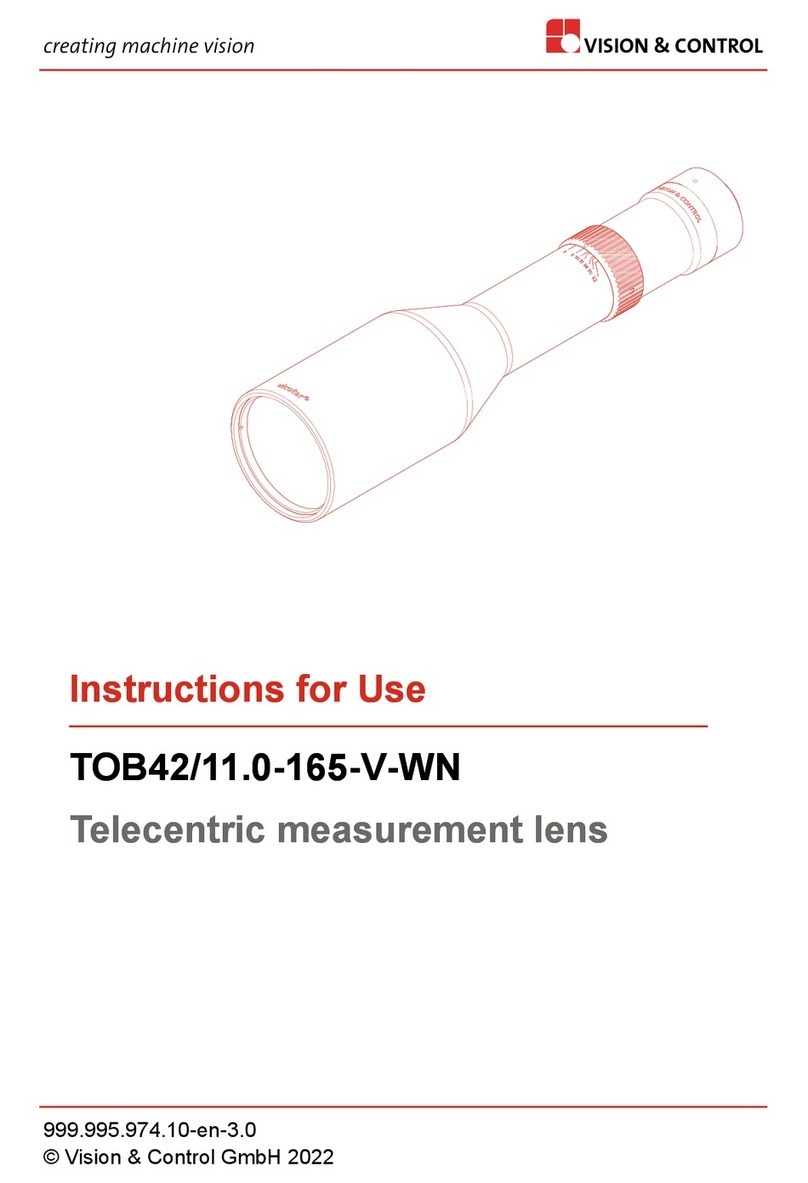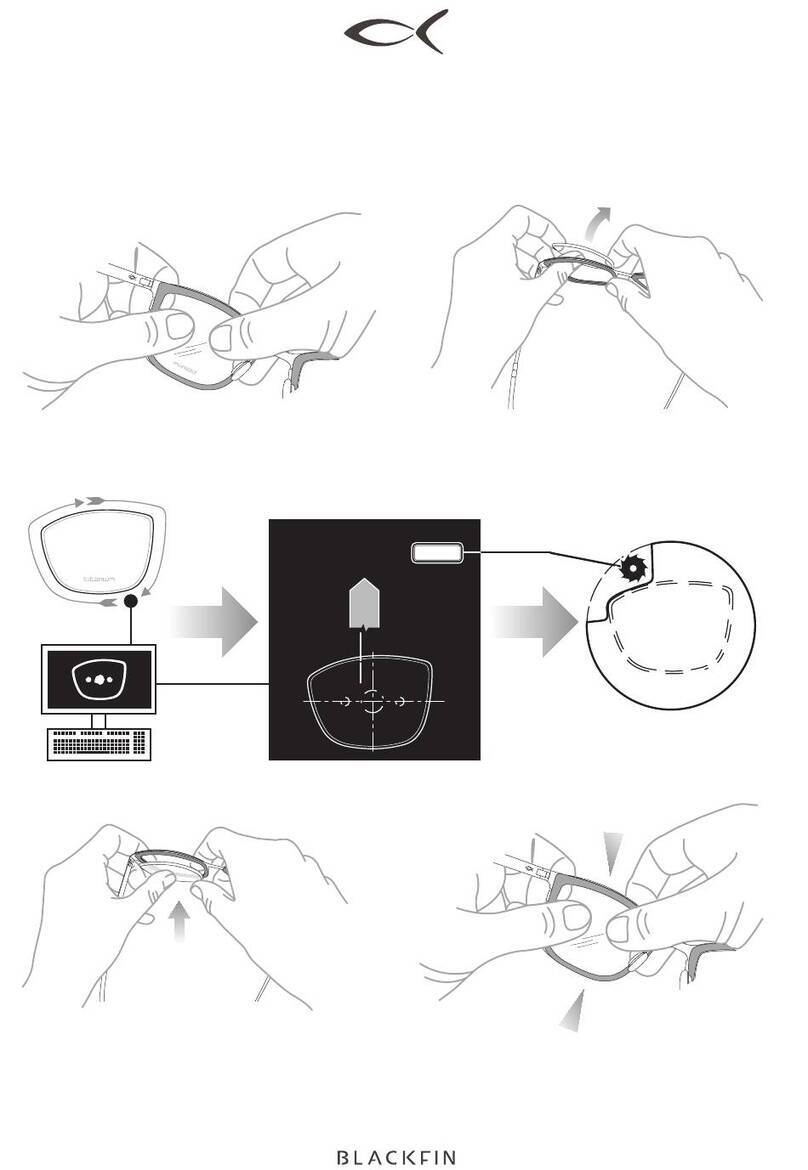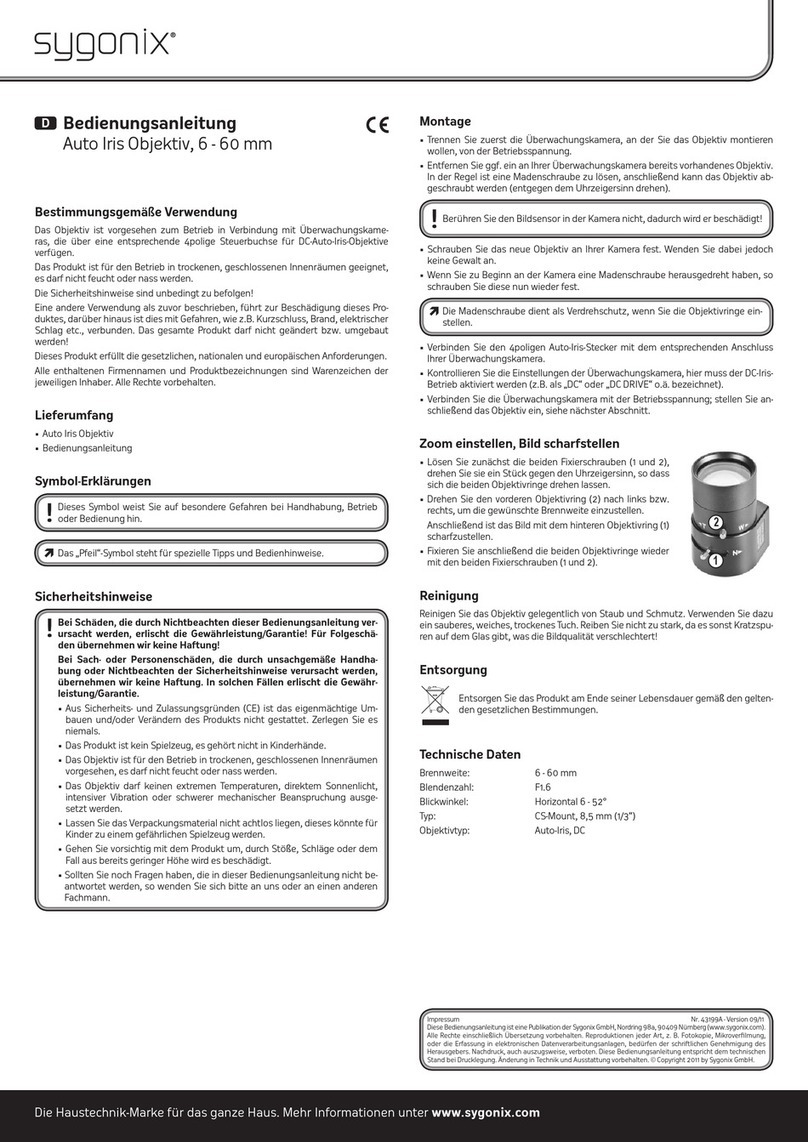ARRI Tilt Focus User manual

Tilt Focus
Instruction Manual
as of May 1999

clamping for rotating the lens
clamping for tilt
scale for tilt
socket for
flexible shaft

ARRI Tilt Focus
3
2. Safety Specifications ............................ 5
Warning Indications........................... 5
General safety specifications............... 5
Important Indications .......................... 5
Product Identification .......................... 6
Meaning of the symbols
in this user manual ............................. 6
3. General Description .............................. 7
4. Mounting the Lens ................................9
5. Operation .............................................11
5.1 Focusing.............................................11
5.2 Adjusting the Working Aperture........... 11
5.3 Tilting................................................. 11
Scheimpflug Condition ..................... 14
Working examples ........................... 15
Setting a focal plane ........................ 15
Isolating a particular subject area
with selective focusing ...................... 16
5.4 Turning............................................... 17
6. Technical Data ..................................... 19
7. ARRI SERVICE ........................................ 20
1. Contents

4
ARRI Tilt Focus

ARRI Tilt Focus
5
2. Safety Specifications
Warning Indications
Danger of injury
or equipment damage possible!
General safety specifications
• To ensure optimal performance, it is essential that
you acquaint yourself with this instruction manual.
• Set-up and operation of the equipment should only
be carried out by persons who are familiar with
the equipment!
• Repairs must only be carried out by authorised
professionals!
• Use only original ARRI spare parts and accessories!
Important Indications
• Avoid operational errors!
• Attach lens cap and protective cap to prevent
damage!
• Clean optical surfaces only with a lens brush or a
clean lens cloth! In cases of solid dirt moisten a
lens cloth with pure alcohol.
• Do not use solvents to clean the Tilt Focus Lens!
• Do not loosen any screws which are painted over!

6
ARRI Tilt Focus
Product Identification
When ordering parts or accessories, or if any
questions should arise, please advise your type of
product and serial number.
Meaning of the symbols
in this user manual
➪ photo indicates objects which are shown
in illustrations.

ARRI Tilt Focus
7
3. General Description
The ARRI Tilt Focus lenses can be tilted out of their
optical axis and turned. This is possible because the
lenses depict a larger image circle than is necessary
to cover the actual negative format.
The creative possibilities are considerably more
far-reaching than with focus and aperture stop
alone on conventional lenses.
Examples of use:
• Free displacement of a focal plane, i.e. focusing
on an object plane not parallel to the filmplane.
• Isolation of a particular part of an image through
a specifically set focal plane.
The ARRI Tilt Focus lenses are especially robust and
precise. An index scale simplifies exact reproduction
of the chosen settings. Focusing is carried out using
a normal lens ring into which both normal follow-
focus mechanisms and adjustment motors can be
inserted.
An important advantage of the ARRI Tilt Focus lenses
is the fact that the image centre hardly moves at all
while tilting the lens, considerably simplifying tilting
during a shot.
The easily readable aperture scale is calibrated in
T-stops, can be read sideways and is printed on
both sides of the lens. Unified design, the same
front diameter of 87 mm and the gearing of the
aperture ring offer further user comfort.

8
ARRI Tilt Focus

ARRI Tilt Focus
9
4. Mounting the Lens
• Pull tight the clamp on the lens for lens rotation
➪ photo.
• Open the bayonet ring on the lens mount receptacle
of the camera completely by turning anti-clockwise.
• Push the lens into the lens mount receptacle
without catching it. The slot on the lens mount
must fit over the index pin.
• Press the lens flat onto the lens mount receptacle
and close the bayonet ring by turning clockwise.
clamping for rotating the lens

10
ARRI Tilt Focus

ARRI Tilt Focus
11
5. Operation
5.1 Focusing
Focusing is carried out using the lens’ focusing ring.
• After tilting, it is essential to check focus again
on the camera’s ground glass. Through tilting the
line of focus drifts out of the centre.
5.2 Adjusting the
Working Aperture
The working aperture can be adjusted on the
aperture ring according to the light values measured.
• When tilting the lens, the viewfinder image will
darken somewhat. This relates only to the
viewfinder and will not be visible on the film!
5.3 Tilting
On lenses which are mounted rigidly to the camera,
the focused plane runs parallel to the filmplane. In
tilting a Tilt Focus lens, the focused plane is displaced
in accordance with the tilting movement.
The Tilt Focus lenses thereby enable:
• free displacement of a focal plane, i.e. focusing on
an object plane not parallel to the filmplane, or

12
ARRI Tilt Focus
• isolation of a particular part of an image through
a specifically set focal plane.
Through tilting or shifting of the lens,
the object to be depicted may also be
at the edge of the image circle of the
lens. This could cause vignetting. After
every tilting or turning movement,
and/or when altering the set working
aperture, the viewfinder image should
be checked for unintentional shading.
This could also be caused by a matte
box, despite a sufficiently large image
circle.
• Before tilting, the corresponding locking knob
➪ photo on the Tilt Focus lens must be released.
• When tilting the lens, the viewfinder image will
darken somewhat. This relates only to the
viewfinder and will not be visible on the film!
locking knob
scale

ARRI Tilt Focus
13
• A flexible shaft, K2.34890.0, can be used on the
operating knob for tilting ➪ photo to enable
comfortable adjusting.
scale
socket
for flexible
shaft

14
ARRI Tilt Focus
Scheimpflug Condition
By tilting the lens it is possible to adjust a focal
plane that is not parallel to the filmplane. The
Scheimpflug Condition establishes that a plane in
the subject area will be depicted in focus when
• the filmplane,
• the lens plane and
• the image plane in the subject area to be depicted
all intersect in one line.
This plane will then be completely in focus, even at
maximum aperture.
Through tilting and turning simultaneously the
plane depicted in focus can be “tipped” in any
direction.
The depth of field of a lens depends on
• the lens’ focal length of the lens
• the set working aperture and
• the distance at which the lens is focussed
When the lens is tilted and/or rotated, the depth of
field is displaced along with the focus plane.

ARRI Tilt Focus
15
Working examples
Setting a focal plane
lens plane film plane
depth of field
standard-situation without tilt focus
standard lens
object plane
lens planeobject plane film plane
depth of field
settings according to the Scheimpflug condition

16
ARRI Tilt Focus
Isolating a particular subject area with
selective focusing
By setting the lens plane against the Scheimpflug
Condition, an extremely small depth of field can be
achieved. This can be used for optically isolating
individual objects.
lens plane film plane
depth of field
object plane

ARRI Tilt Focus
17
5.4 Turning
By turning the lens, the focal plane can be turned
in any desired direction.
• Before turning the lens, the clamp for lens
rotation ➪ photo on the Tilt Focus lens must be
released, and after turning fixed in position.
The lens has soft stops every 90°. If a stop is not
desired the pressure pad ➪ photo can be twisted
out slightly with a screwdriver.
clamping for rotating the lens
screw out pressure pad

18
ARRI Tilt Focus

ARRI Tilt Focus
19
6. Technical Data
Mount camera side ......PL-mount
Rotation ...................... 360 degrees
Tilt-Adjustment ............. + / - 8 degrees
(scale division = 1 degree)
24/T4 45/T2,8 90/T2,8
Focal length: ...............24 mm 45 mm 90 mm
Max. aperture: ............1:3.5 1:2.8 1:2.8
No. of lenses: ............. 11 10 6
No. of lens groups: ......9 9 5
Image Circle diameter: ... 58.2 mm 58.2 mm 58.2 mm
(2.29“) (2.29“) (2.29“)
Front diameter: ............87 mm 87 mm 87 mm
T-Stop scale: ...............4…22 2,8…22 2,8…22
Close-up distance: ....... 0,3m 0,4m 0,5m
(0.98“) (1.31“) (1.64“)
Weight [g/lb.]: ...........990 1120 1230
2.18 2.46 2.71
lens angle [degree]
TV horizontal: 46 25 13
TV vertical: 35 19 10
1,85:1 horizontal: 47 26 13
1,85:1 vertical: 27 14 7
Note:
the values above relate to standard 35 mm format, 1.85:1
projected image and TV transmitted image area 1.33.

20
ARRI Tilt Focus
7. ARRI SERVICE
Germany .................. Arnold & Richter Cine Technik
Türkenstraße 89
D-80799 München
phone (089) 3809-0
fax (089) 3809-1244
fax service: (089) 3809-1793
USA ..........................ARRI USA
617, Route 303
Blauvelt, New York 10913
phone (914) 353 14 00
fax (914) 425 12 50
e-mail: [email protected]
ARRI USA
600 North Victory Blvd.
Burbank, California 91502
phone (818) 841 70 70
fax (818) 848 40 28
e-mail: [email protected]
GB ............................ARRI (GB) Ltd.
The Movie House
1-3 Airlinks, Spitfire Way
Heston TW5 9 NR
phone (0181) 848 88 81
fax (0181) 561 13 12
e-mail: [email protected]
Table of contents
Other ARRI Lens manuals



